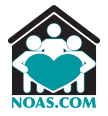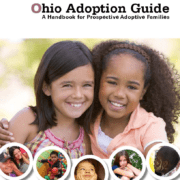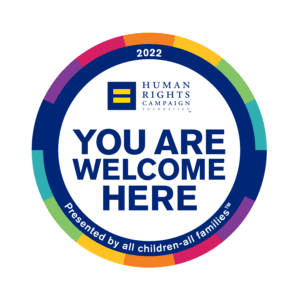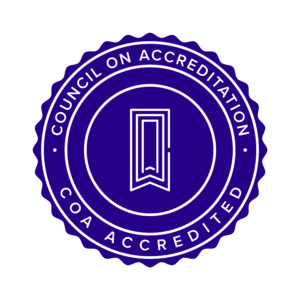For every child . . . a family . . . forever.
Luck guided these children to us from all settings. Many face and have overcome challenges we cannot imagine. It takes time, patience, and understanding to help these children get their bearings and begin life’s journey again.
Far too many kids are growing up without permanent family connections in Ohio. Each year around 1,000 children age out of foster care alone.
We believe every child has a loving understanding and supportive family that hasn’t found them yet. They are waiting to return the love you give. We believe every child and young adult needs and deserves a family who will meet them where they are and guide them on their journey.
From the beginning…
(1975-1978) Adoption Project for Handicapped Children
The product of a three-year, federally funded Project, NOAS emerged as an independent, specialized adoption agency in 1978 with a staff of four and a budget of $80,000. With an office in Warren, NOAS was currently licensed by the Ohio Department of Job and Family Services to participate in the placement of children for adoption or in foster care (at both the treatment and family level care). NOAS also provided parent education, advocacy, and professional training.
(1984) Hine Memorial Fund of the Youngstown Foundation
The Hine Memorial Fund funded a NOAS program to develop adoptive families for children with developmental disabilities who most often spend their childhoods in institutions because of their perceived “unadoptability”.
(1986) The Eileen Lewis Memorial Endowment Fund
This Foundation was established to ensure the ongoing financial stability of the agency, and to perpetuate the philosophy of NOAS—that every child should have the opportunity to grow up in a family of their own. With the passing of NOAS founder, Barbara Lewis Roberts, in 1994, the Foundation’s name was changed to The Eileen Price Lewis, Barbara Lewis Roberts Foundation.
Also in 1986, NOAS developed a community-based treatment level foster care program for children with emotional and behavioral challenges who might otherwise be placed in more restrictive and costly institutional placements.
(1989) Mahoning County Family Preservation Council
The Council joined NOAS in 1989 to promote community and agency collaboration, coordination, and communication in order to strengthen services for families, and to decrease the need for placements of children outside their homes.
(1989-1991) Northeast Ohio Mental Health/Adoption Training Project
NOAS operated this Project in fifteen northeast Ohio counties to provide a referral and consultation network of mental health professionals, able to provide services to children and families regarding adoption issues.
(1990-1992) The Partners: A Post-Legal Adoption Services Project
NOAS operated the Project, which developed using a mental health model and offered a continuum of services, such as case management, family preservation, family life education, support groups, respite, medical, and financial consultation.
(1991-1993) Northeast Ohio Minority Recruitment Project
This Project was designed to increase adoptive placements of minority children, to reduce barriers to adoption for minority families, to operate a regional minority adoption exchange, and to provide cultural sensitivity and competence training to child welfare staff.
(1992-1996) Permanency Planning Project
This Project was designed to build upon the collaborative relationship between and among the Summit County Children Services Board, the Northeast Ohio Adoption Services, and the providers of residential treatment in this region. The goal of the program was reunification with families of origin, placement with adoptive families, and development of other long-range family-type connections.
(1992-1999) Ohio Families for Kids
In 1991, with state funding, NOAS developed a program to teach independent living skills to teens growing up in the child welfare system. Ohio Families for Kids, funded by the Kellogg Co., provided answering and referral services to prospective adoptive parents for nine counties in northeast Ohio.
(1993-1995) Northeast Ohio Adoptive Parent Leadership Circle Project
This Project, in collaboration with Summit County Children Services, offered leadership development to adoptive parents, provided support to adoptive parent support groups, and built a network of adoptive family support groups.
(1995-1998) Respite and Recreation Project
This Project, in collaboration with Kent State University’s School of Exercise, Leisure, and Sport, and NOAS provided respite to meet the special needs of each child, and thereby increase the stability of adoptive families through therapeutic recreation programming.
(1995-1999) Families for Teens
Families for Teens, another collaborative project with Summit County Children Services and Portage County Department of Human Services, coordinated the efforts of counties in Northeast Ohio to advocate for the rights of older teens to be adopted.
(1997-2000) Sisters and Brothers Together
In collaboration with the Cuyahoga County Department of Children and Family Services, this Project developed and implemented an initiative to eliminate barriers and increase the number of siblings placed together in adoptive homes. An important outcome of this Project was the placement of siblings and development of the Sibling Decision-Making Matrix. The Matrix is a step-by-step process that can be used by professionals in making sibling placement decisions. It has been adopted by Minnesota as the state standard for making sibling placements.
(2002-2006) Targeted Community Outreach
NOAS used the Targeted Community Outreach to demonstrate a radically different approach for recruiting new families by applying social marketing and community organizing theory/practice to the problem of too many waiting children, and by building community capacity to conduct targeted outreach efforts. Long-term outcomes include a strengthened sense of community support for waiting children and adoptive families, an increase in the number of adoptive parents, an increase in the number of adoptions, and a decrease in the time that children wait.
(2003-2008) Rural Targeted Community Outreach (RTCO)
RTCO, a federal demonstration, funded an opportunity for NOAS to implement the innovative social marketing/community organizing concepts developed in TCO grant in rural Ohio. The approach to recruiting adoptive families is rather unique in the child welfare system. Portage, Columbiana, Licking, and Knox Counties were pilot sites for RTCO.
(2007-Present) Wendy’s Wonderful Kids (WWK)
In 2007, Northeast Ohio Adoption Services became a Wendy’s Wonderful Kids (WWK) program. A signature program of the Dave Thomas Foundation for Adoption, WWK funds a NOAS recruiter to develop/recruit adoptive families for specific waiting children. Being involved with WWK has allowed NOAS to network with adoption agencies from all parts of North America.
(2017-Present) Monthly Parent Support Group
NOAS is committed to supporting its families during the licensing process, when they have a placement, and after adoption. With this in mind, NOAS began to offer a monthly support group for its parents to come together and discuss the joys and challenges of parenting children raised in the foster care system. Dinner and childcare is provided, allowing families to focus on developing their parenting skills, relationship with other families, and education.
(2018-Present) HRC All Children – All Families (ACAF)
NOAS is proud to achieve the 2020 Solid Tied of Recognition from the Human Rights Campaign Foundation. The staff conducted an internal self-assessment, provided professional development to staff, and implemented ACAF’s “Benchmarks of LGBTQ Inclusion,” which track policy and practice changes within agencies.
HRC’s All Children – All Families, a project of the Human Rights Campaign Foundation, promotes LGBTQ inclusive policies and affirming practices among child welfare agencies and formally recognizes those agencies that are leading the field with innovative approaches to inclusion.
(2019-Present) IGNITE Foster Youth Mentoring Program
After seeing the need to support foster youth coping with loneliness and distance from the community, NOAS created the “IGNITE Foster Youth Mentoring Program: Mentor One Who Needs Someone”. This program matches current and former foster youth with healthy adult connections who can help them reach their full potential while forming a close, trusting relationship.
(2019-Present) TBRI® Parent Education and Coaching
In October of 2019, two NOAS staff members traveled to The Karyn Purvis Institute of Child Development, a program of the Department of Psychology in the TCU College of Science & Engineering in Fort Worth, Texas to become certified TBRI® practitioners TBRI® is an attachment-based, trauma-informed intervention that is designed to meet the complex needs of vulnerable children. TBRI® uses Empowering Principles to address physical needs, Connecting Principles for attachment needs, and Correcting Principles to disarm fear-based behaviors. While the intervention is based on years of attachment, sensory processing, and neuroscience research, the heartbeat of TBRI® is connection. NOAS offers TBRI® classes, as well as in-home coaching to better serve our families.
(2021-Present) Council on Accreditation (COA)
NOAS is pleased to be fully accredited by the Council on Accreditation (COA). The accreditation process provides a framework for organizations to continuously improve and offer evidence-based best practices that support clients and the community. The COA accreditation process involves a detailed review and analysis of an organization’s administration, management, and service delivery functions against international standards of best practice. The standards driving accreditation ensure that services are well-coordinated, culturally competent, evidence-based, outcomes-oriented, and provided by a skilled and supported workforce. COA accreditation demonstrates accountability in the management of resources, sets standardized best practice thresholds for service and administration, and increases organizational capacity and accountability by creating a framework for ongoing quality improvement. Being accredited provides external validation for NOAS of quality services. COA’s whole-organization approach ensures that all staff—from human resources to finance to direct care and clinical staff—are working together to carry out our mission.



